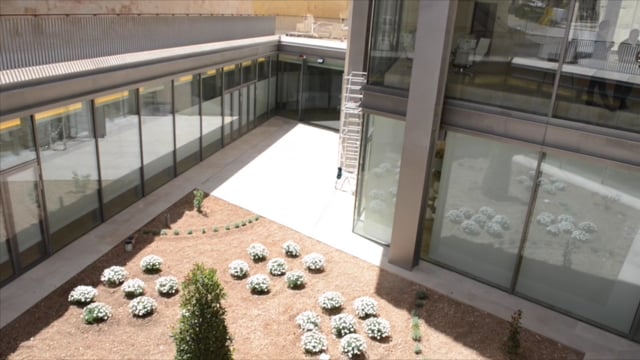[WATCH] Inside Renzo Piano's parliament for Malta
Permanent exhibition to be housed in the new Parliament building foyer, but security measures to be amped up at the building









Speaker of the House of Representatives Angelo Farrugia explained that entrance into the parliament will be open to all, but that security measures will mean that all those who enter the building will be screened. He added that MPs would also have a special identification card to gain access to the offices and plenary chamber.
Farrugia took journalists on a tour of the new parliament building earlier today and explained that access to the surrounding area would not be completely off-limits, following concerns over the security of the building. The police had recommended banning access to the public along the building’s perimeter, but Farrugia said that security features would also be discussed in the future, with a possibility of installing new bollards to protect the building.
During the tour Farrugia explained that the entrance would be open to the public and that it would house a permanent exhibition about the history of the parliament ranging from 1921 to the present day.
"The exhibition will include interesting historical points like changes in the constitution. Another section of the foyer will also be used to house other exhibitions,” Farrugia added, explaining that many had already expressed their interest in exhibiting their work here.
“May will see an exhibition of works created by inmates at Corradino Correctional Facility,” Farrugia said stressing that this aimed to show that the parliament was a building for all the people of the country.
During the tour, Farrugia also explained that the plenary chamber could hold up to 80 MPs at the same time, and that the desks were partially retractable to offer more space. He added that the prime minister and ministers would be sitting on the speaker’s right had side, with the prime minister being seated on the third seat on his right, while opposition MP’s would be on the corresponding side opposite.
Farrugia added that chairmen of the various committees would be sitting right opposite the chairs and that they would no longer be divided by party leanings. He also stressed the premium being given to time restrictions.
“The speaker now has control over how long MP’s interventions can be by means of a Perspex sheet which changes colour from green to red to show speakers when they are out of time,” he said adding that the stipulated time period would be discussed and agreed by both parties.
The plenary meetings will also be broadcast on TV, radio and on the internet, with MPs being filmed as they speak. Parliament will also be getting its own television channel on the Melita network.
Addressing concerns about the sound-proofing of the chamber, Farrugia said that these details would only be discovered on the official opening of the building next Monday.
Farrugia explained that the press chamber can house 25 reporters at a time and that the strangers’ gallery would accommodate a total of 150 people.
“The building also caters for the possible need of interpreters in the case of international conferences,” Farrugia said showing the media the two interpreters’ booths on the lower level of the building.
The building also houses offices for the prime minister and leader of the opposition, committee rooms, as well as common areas for the MPs to follow meetings via live-stream. There is also a small garden surrounded by offices of the parlimanetary staff on the basement level.




.png)



.png)



.png)










